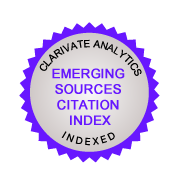Teachers’ Practices in the Acquisition of English by Asian Immigrant English Language Learners
DOI:
https://doi.org/10.32890/mjli2019.16.1.9Keywords:
Early language learners,, early childhood,, Asian learners,, second language acquisition,, sociocultural theories.Abstract
Purpose - The increase in the enrolments of immigrant children in New Zealand seems to have posed great challenges to early childhood education services when it comes to developing the children’s English language acquisition. This qualitative case study explored how New Zealand early childhood teachers develop the English language acquisition of Asian immigrant English language learners (ELLs). The theoretical framework of this research drew on a range of sociocultural perspectives, including sociocultural adaptation and acculturation strategies.Methodology - The main participants of this study were seven early childhood teachers and six Asian immigrant ELLs from two early childhood centres. Data on the teachers were collected through observations and semi-structured interviews. For each centre, observations were carried out over a six week period which enabled a series of snapshots of how the teachers developed the English language acquisition of the ELLs.
Findings - Making interactions comprehensible for the ELLs is one of the main strategies used by the teachers in developing the acquisition of English language by the ELLs. In the process of teaching the English language to the ELLs, most of the teachers were observed to use certain strategies in making interactions comprehensible for them. The teachers highlighted the strategies and modifications they made in order to make their interactions comprehensible for the ELLs. During the interview, it was clearly seen that with better proficiency in the English language, the communication between the ELLs and their teachers improved. Therefore, the sociocultural adaptation process takes place in a smooth manner for both the ELLs and the teachers.
Significance - The central significance of the finding is that through the exploration of New Zealand early childhood teachers’ beliefs and practices, important insights are offered which lead to the improvement of educational practices in early childhood settings for immigrant children in relation to English acquisition. While some of the teachers’ beliefs and practices may have facilitative or positive effects on English acquisition, others may bring debilitative or harmful effects. The findings also add to the existing body of knowledge on teachers’ beliefs and practices in developing English acquisition among the ELLs, particularly Asian children. In the New Zealand early childhood education context, the study provides a platform on how early childhood teachers in New Zealand could develop English acquisition among Asian immigrant ELLs, while valuing and understanding children’s cultural backgrounds.




























